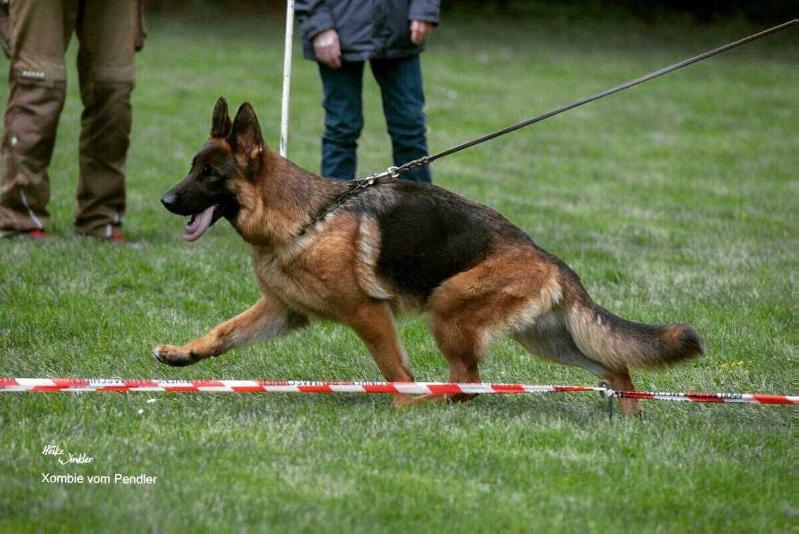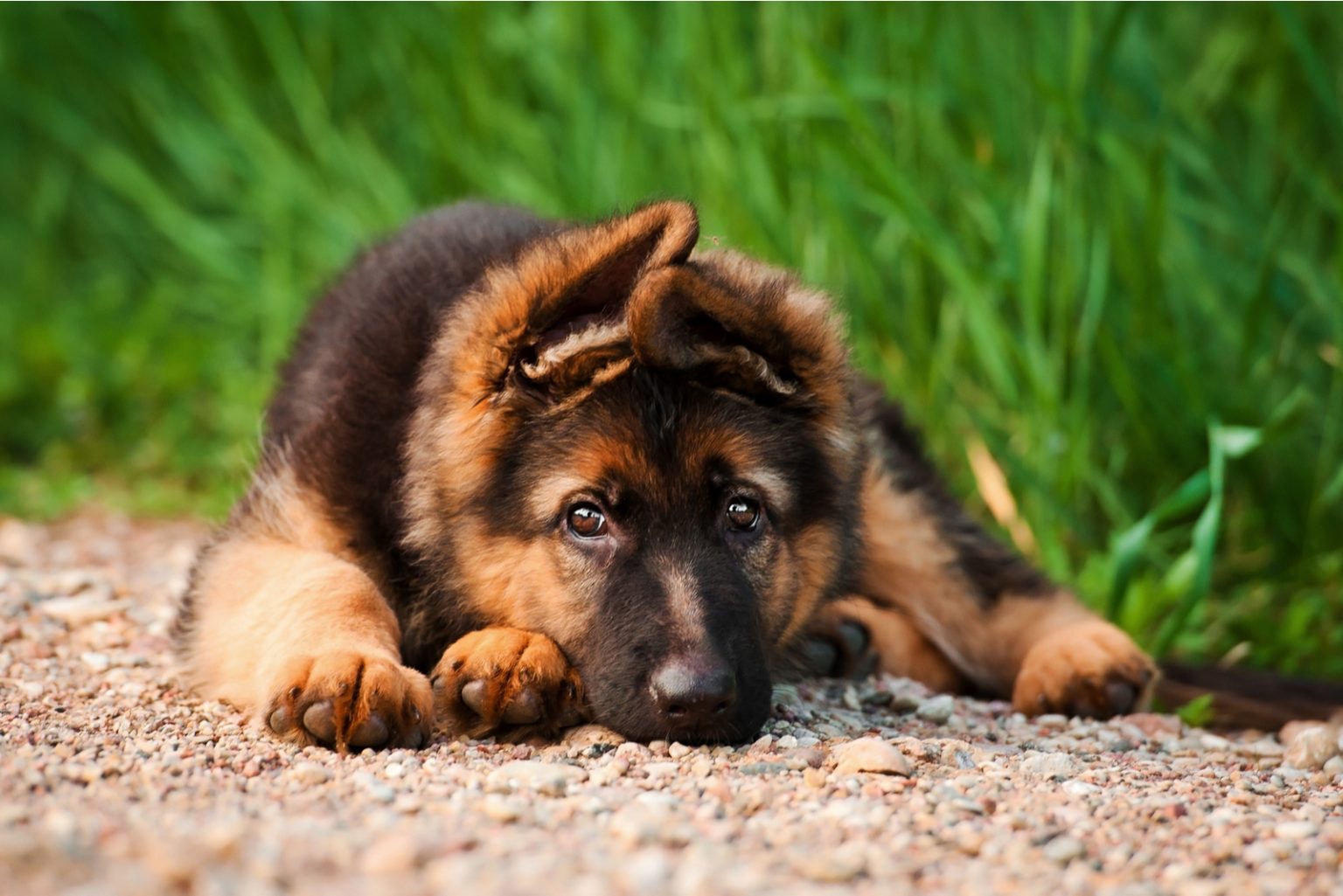How Do You Treat Dog Hip Dysplasia
Early diagnosis of the disease can decrease or even prevent the long-term arthritis that is caused by hip dysplasia in dogs. There are several options for treating canine hip dysplasia, including a few surgical options as well as managing the condition through medications.
Your vet will consider many factors before recommending the proper treatment for your dog. Your pet should have a complete orthopedic evaluation before determining if surgery or medical management is right for you.
How Do You Tell Your German Shepherd You Love Them
A moderate exercise will promote the muscle development necessary for joint stability but without overloading the joint. Regular visits to the vet for general check- ups, especially to check the condition of the joints and their development. In conclusion, we now know how to prevent hip dysplasia in German Shepherds.
German Shepherds Are Natural Guard Dogs
Without proper socialization, this can sometimes turn into territorial behavior and even aggression toward strangers and other dogs. Adopting an older German shepherd means you dont know if their previous owner took the time to socialize them. This is a risk potential GSD adopters need to be aware of so they can take the necessary precautions when bringing guests and other dogs onto their property.
Donât Miss: What Are Some Good Names For German Shepherds
Read Also: Average German Shepard Weight
Stage : Treating For Pain And Discomfort
In many ways, hip dysplasia is actually a type of canine arthritis. As such, it often causes pain and inflammation that is quite similar to arthritis.
In this stage, where there is some discomfort but it is fairly mild, your veterinarian may opt for symptoms management only.
Canine NSAIDs can be helpful to lessen inflammation and ease pain.
Veterinarians today often recommend health supplements such as glucosamine and chondroitin as well as other pain medications.
Thoughts On How Long Do German Shepherds Live

Thanks for connecting to Mysweetpuppy.net. Please keep in mind that I, Claudia Bensimoun, do not write any of the blogs or reviews on this website, nor have I in the past. I only answer the comments section.Unfortunately,cancer affects so many dogs today, with the German Shepherd being particularly prone to canine cancer. Age is an important risk factor in the development of cancer. Some cancers are hereditary. More than half of dogs aged ten and over will die of cancer.Exposure to carcinogens contributes in the development of cancer. It is a chronic disease that is not curable. That said, it can be in remission. Treatments today include chemo, surgery, and radiation.Consult with your veterinarian for advice and treatment. It is very important to have your dog screened for cancer. This should be done routinely. Early screening can help diagnose cancer at an early stage with better treatment results. Always pay attention to any changes in your dog like lumps, swollen lymph nodes, dry coughs, loss of weight, and lack of interest in regular fun activities.
Thank you. This meant a lot to mee
Cats live much longer than four to five years
Don’t Miss: How To House Train A German Shepherd
How Can You Tell If A German Shepherd Is Purebred
How to tell if a German Shepherd puppy is purebred? To know if a puppy is purebred due to its physical appearance, you must wait up to 3 months, unless you are an expert in the breed. Therefore, in very young puppies it is difficult to recognize if they are purebred or mixed because they are often very similar.
Are Some Types Of German Shepherds More Prone To Bad Hips Than Others
There are five different types of German Shepherds. Unfortunately, the show lines are more prone to bad hips than others.
Don’t Miss: Chiwawa Mixed With German Shepherd
What If My German Shepherd Is Over Weight
If your German Shepherd is overweight, he is at risk of developing serious health conditions, like diabetes, heart disease, and cancer. It will also put too much pressure on his joints, causing arthritis and immobility. The heavier he is, the harder it will be to move and to lose the weight.
Look at his food It should be high in lean protein, low in fillers and fat. Then, exercise your dog. Do not over-exercise or starve him to get him to lose weight. It will take time and patience to get him to a healthy weight.
Donât Miss: How To Trim A German Shepherds Nails
Causes Of Hipdysplasia In Dogs
Studies have found that there are several factors that can lead to the development of hip dysplasia in dogs. The most common cause of hip dysplasia in dogs is solely based on genetics.
Large breed dogs, such as the Great Dane, Labrador Retriever, Golden Retrievers, St. Bernard, and German Shepherd dogs are among those canines who have the genetic predisposition for developing this disease.
Additionally, environmental factors,improper nutrition, as well as too much or too little exercise, are alsofactors when it comes to the development of hip dysplasia.
Obesity might also be an issue. Those canine friends that struggle with weight issues and obesity are at a higher risk of preexisting hip dysplasia rapidly worsening and are even responsible for the development of hip dysplasia in some cases.
You May Like: How Do You Train A German Shepherd
Stage : Adding Physical Therapy And Weight Management
When the hip dysplasia doesnt yet warrant surgery but does interfere with your GSDs quality of life, your veterinarian may prescribe physical therapy along with weight management as needed.
The simple fact is, when your dog is overweight, this puts more pressure on the hip joints.
Also, physical therapy can help your dog strengthen key muscle groups and learn how to workaround the hip abnormality.
German Shepherd Hip Dysplasia: What Is It
The simplest explanation for hip dysplasia is that the ball and socket of the hip dont form and work properly.
If you are not familiar with canine anatomy , the canine hip has two main parts:
1. The ball at the top of the femur, the largest leg bone.
2. The socket in the hip bone where it connects with the ball.
Of course there are a lot of other moving parts that are required to make a hip joint work the way it should, including ligaments, muscles, blood vessels, and more.
But hip dysplasia specifically concerns the ball and socket parts. When the socket doesnt form properly into a cup or circle shape, the ball of the femur cant fit into it the way it should.
If you would like to see this explanation visually, the Vet Depot offers an excellent infographic you can take a look at.
This causes all kinds of problems, which we will discuss in the next section.
Just so you are aware, there is a related condition that German Shepherds can also inherit from their parents. This condition is called elbow dysplasia.
So you may be wondering, do German Shepherd dogs have elbows? The elbow that is being referred to here is actually the shoulder joint so where the femur of the front leg meets the socket of the shoulder girdle.
We wont discuss elbow dysplasia further here, but it is worth knowing the problem exists, and most of the information you are about to read applies to elbow dysplasia as well.
Recommended Reading: Best Nail Clipper For German Shepherd
When It Comes To German Shepherd Breeding What Is The Best Age
German shepherd dogs , are one of the most popular dog breeds in the world. They are loyal companions, among the smartest dog breeds, hardworking, and just gorgeous animals to behold. Due to the high demand, German shepherd breeding can be an appealing idea.
There is a lot of thought that goes into dog breeding, which means many factors need to be weighed. With the GSD breed, there are many health concerns to consider that are associated with them. While this can be similar to other breeds, it is important to know what to consider and how it relates to when you should consider breeding. Lets break down the best age to breed a German shepherd.
You May Like: How Much Dog Food To Feed A German Shepherd Puppy
German Shepherd Hip Dysplasia: Can It Be Prevented

There is only one surefire way to prevent German Shepherd hip dysplasia, and that is careful breeding.
Reputable breeders that participate in the OFA CHIC database post results of their breeding tests.
This not only verifies their parent dogs are free from genetic hip dysplasia but ensures healthier puppies in future generations.
Always ask your breeder to show you proof that these tests have been done.
There are also some ways to potentially minimize how severe a dogs hip dysplasia may become, including feeding it the right food, adding supplements, and keeping your dog at a healthy weight for each stage of life.
Because every case of hip dysplasia is as unique as every canine patient, always talk with your dogs veterinarian about what the right approach is for your German Shepherd dog.
Also Check: Pitbull Vs German Shepherd Who Would Win
How To Treat Dysplasia In German Shepherds
This article was co-authored by Pippa Elliott, MRCVS. Dr. Elliott, BVMS, MRCVS is a veterinarian with over 30 years of experience in veterinary surgery and companion animal practice. She graduated from the University of Glasgow in 1987 with a degree in veterinary medicine and surgery. She has worked at the same animal clinic in her hometown for over 20 years.There are 14 references cited in this article, which can be found at the bottom of the page.wikiHow marks an article as reader-approved once it receives enough positive feedback. In this case, 100% of readers who voted found the article helpful, earning it our reader-approved status. This article has been viewed 14,014 times.
German Shepherds are large, lovable dogs. They are also intelligent, protective, and athletic.XResearch source Unfortunately, German Shepherds are prone to developing a joint condition called dysplasia in their elbows and hips in fact, nearly 20% of German Shepherds will develop hip dysplasia during their lifetimes.XResearch source If your German Shepherd isnt able to move around like he used to, he may have dysplasia and will need veterinary treatment.
Treatment For German Shepherds Hip Dysplasia
Hip dysplasia is known as a progressing health issue, meaning they get worse as time passes by. Thats also why Ive mentioned that itll get harder to treat once your dog becomes a senior.
This introduces us to the treatment of a German shepherds hip dysplasia. It may not completely erase the problem, but it will help ease the pain experienced by your dog while slowing the development of the health problem.
There are two types of such treatments. Lets start with the less risky approach.
Recommended Reading: Is My German Shepherd Underweight
S And Prospects For Elimination Of The Problem
Hip dysplasia is a complex trait which involves multiple unknown genes and environmental factors. Eradication schemes have been running in some countries for decades and still it is commonplace. Thus prospects for its quick elimination are low. The OFA scheme to control hip dysplasia relies on one single phenotypical hip trait the score from an EHR. The PennHIP scheme uses two traits, those of the EHR and DI to determine breeding potential and the FCI and BVA/Kennel club schemes also use two traits: the EHR including the NA. In a recent study, Zhang et al suggested that using scores from four hip traits combined to create a breeding value for each animal would help speed up elimination of the condition. This combined score would provide more information about a dogs genetic potential than information about one single trait such as the EHR. They felt that information on the single joint trait EHR gave insufficient information to provide the basis for breeding decisions.
Future development of genetic tests to help identify some of the hip dysplasia genes, along with more use of pedigree data that includes the health of ancestors and progeny , may well help to improve methods used to eliminate this condition. Currently we have to continue to rely on choosing phenotypical traits which apparently indicate the presence of healthy genes.
What Happens If Hip Dysplasia Is Left Untreated
Hip dysplasia is a treatable condition. However, if left untreated, it can cause irreversible damage that will cause pain and loss of function later in life. It is the leading cause of early arthritis of the hip before the age of 60. The severity of the condition and catching it late increase the risk of arthritis.
Read Also: German Shepherd Poodle Mix Hypoallergenic
What Is Canine Hip Dysplasia
The pelvis cradles the head of the femur in a cup-like socket of bone that forms the hip. Puppies typically are born normal, but as the puppy matures, the hip joint alignment becomes progressively worse.
As a young pet grows, if the alignment isnt just right due to bone abnormalities or laxity of the ligaments and muscles that hold the joint together, the misalignment causes wear and tear on the joint. Pups suffering from dysplasia typically have a very shallow socket and/or loose muscles and tendons. This allows the joint to work loose, which places abnormal stress and wear on the bones when they rub together and causes further joint degeneration and pain. Bones respond to stress by growing thicker, which makes the fit even worse. As the dog matures, this damage predisposes to arthritic changes and painful joints.
Hip Dysplasia Symptoms In Adults
A German Shepherd is full grown after the age of two, so if any of these symptoms show up after that time, your dog is considered an adult. This is mostly important for determining treatment options. As youll note, most of these are the same as the puppy symptoms.
- Unsteady gait
- Weakness in the back end
- Limping
- Back legs held close together
- Bunny hopping
- Difficulty standing up or lying down
- Reluctance to run, climb stairs, or play
- Crying when hips are touched
The older a dog gets, the harder it is to treat this condition, so dont wait for things to get worse before bringing them into a vet.
In this video, you can see a German Shepherd bunny hopping. This is a movement in which they move both of their back legs at the same time while jogging or running.
You May Like: Malinois Cross German Shepherd
How Is Canine Hip Dysplasia Diagnosed
The vet will examine your dog for any signs of gait abnormalities or signs such as pain on hip examination. Your vet will usually recommend X-rays to look for signs of structural changes to the joint although these will not be visible in all cases. Your pet may be referred to an orthopaedic specialist for additional investigations.
Why Are German Shepherds Susceptible To Hip Dysplasia

All kinds of dogs can be affected by hip dysplasia, but it is most common in large dogs such as German Shepherds, Golden Retrievers, Bulldogs, and Saint Bernards. German Shepherds are at particular risk for the disorder because they are highly active and because of inbreeding in the breeds history.
The condition is hereditary, meaning that it is passed on through genetics. If it is present in your dogs lineage, its more likely that your dog will eventually get the disorder as well.
You May Like: Why Is My German Shepherd Puppy So Skinny
Hip Dysplasia In German Shepherds
I am a writer with a great interest in German Shepherds, cats, and animals in general. I hope you enjoy my articles.
Hip dysplasia is a fairly common hereditary ailment that commonly affects larger breeds, especially German Shepherds.
German Shepherds make wonderful pets. They are smart, athletic, and loyal, making them great pets and working dogs. Unfortunately, like most large breed dogs, they are prone to a number of health problems.
One of the most common of these problems is hip dysplasia according to the Orthopedic Foundation for Animals, about 19% of German Shepherds have the ailment. Hip dysplasia is a joint problem which can cause pain and mobility problems for your dog and lead to the development of arthritis later in life.
German Shepherds can often live happily with the condition for some time, but its important to provide treatment and proper care to minimize their discomfort. Every owner should be familiar with hip dysplasia so that they can look out for warning signs, keep their pet healthy, and pursue treatment options if necessary.